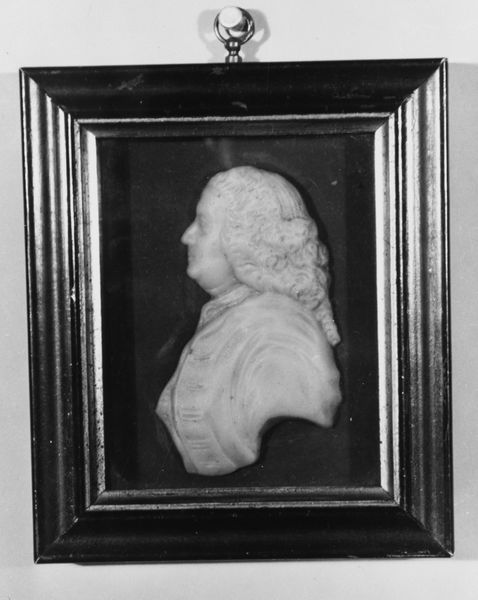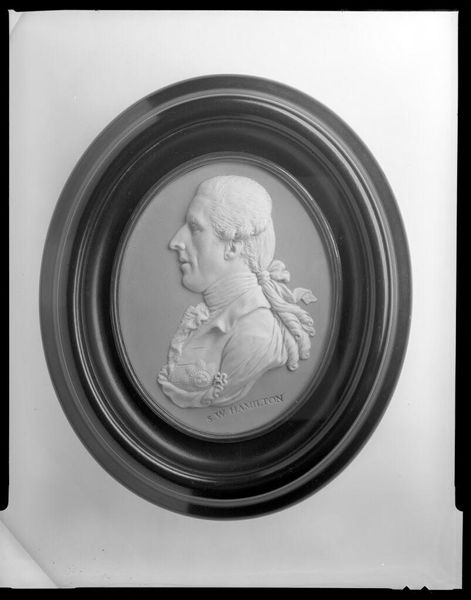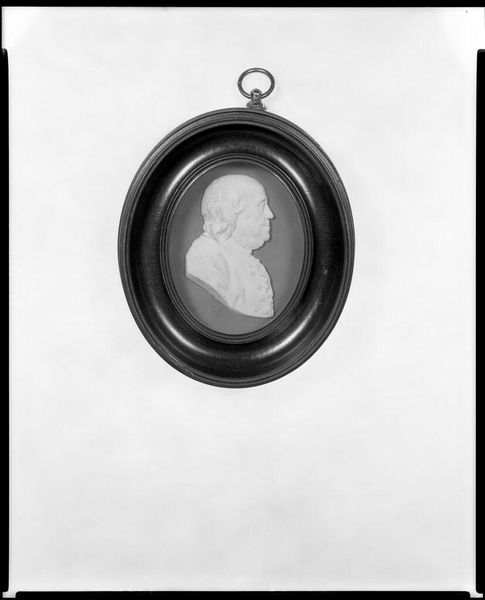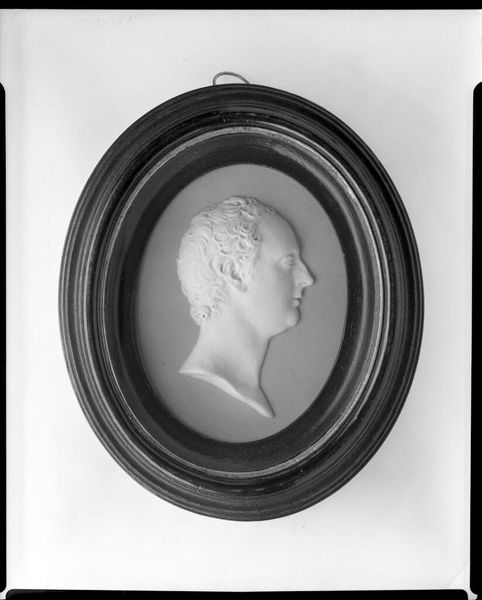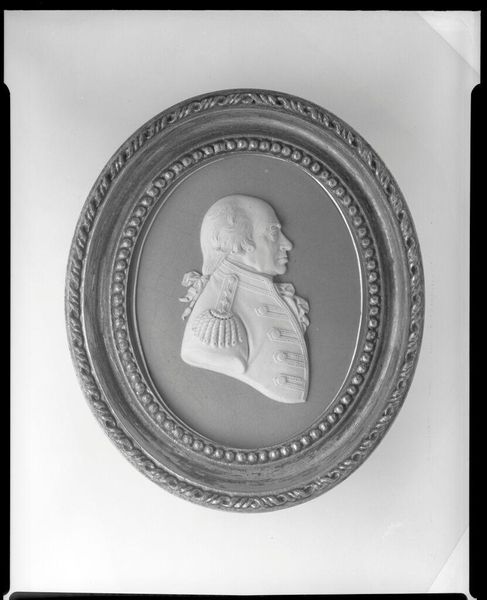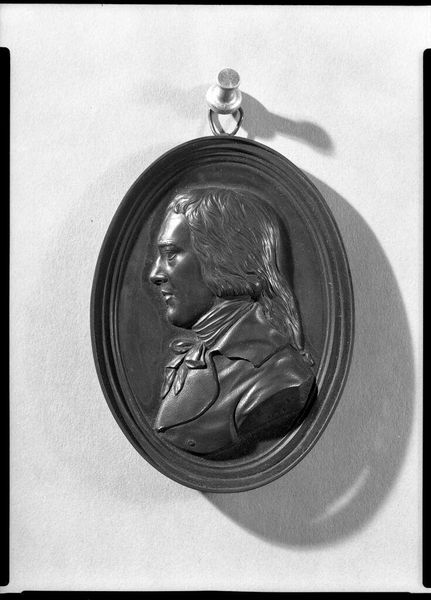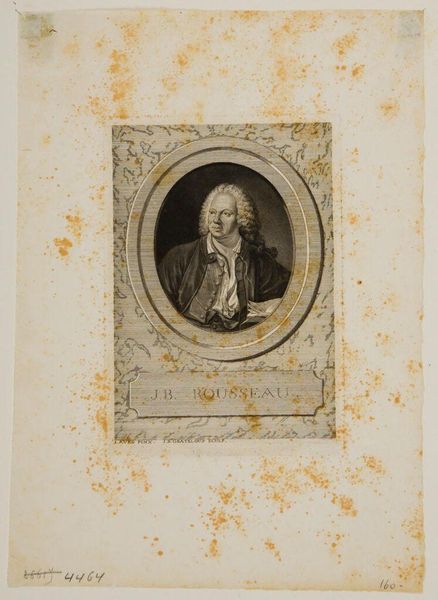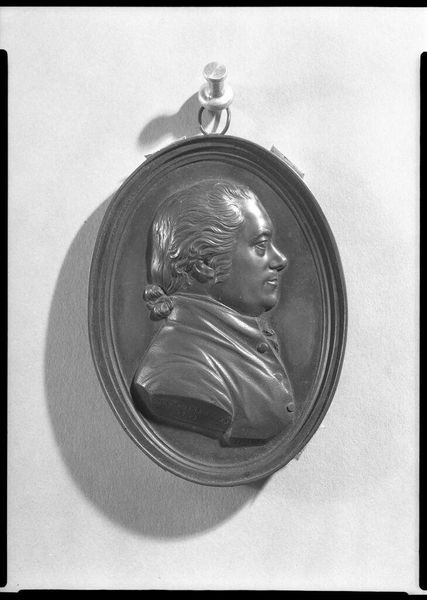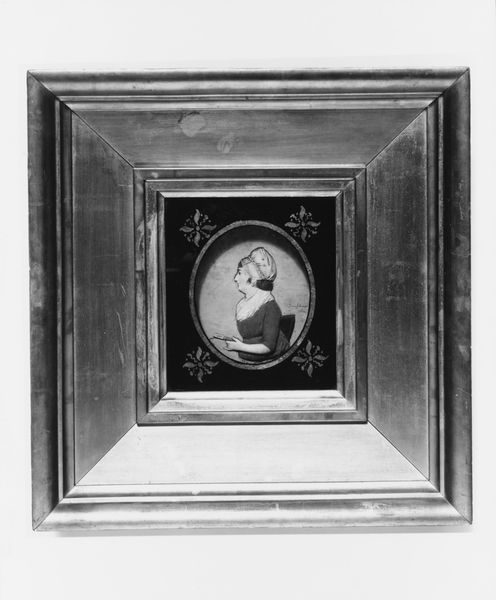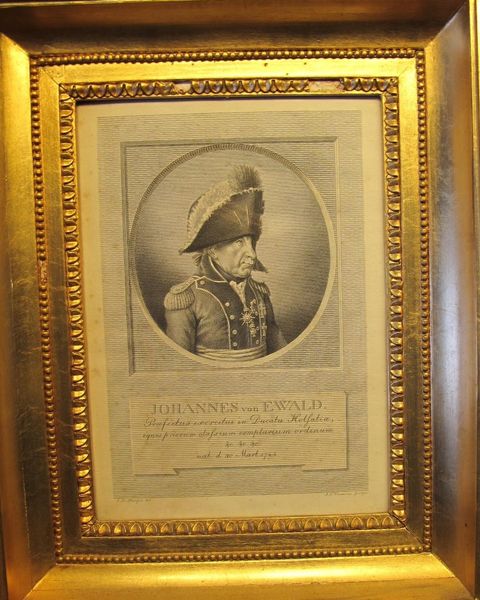
Dimensions: 5 x 5 3/4 in. (12.7 x 14.6 cm)
Copyright: Public Domain
Curator: Well, this somber painting attributed to William P. Babcock is called "Portrait of the Marquis de Lafayette." It's thought to have been created sometime between 1850 and 1880. What's your initial take on it? Editor: My first thought is one of constraint. Everything about this image feels formally controlled, carefully posed, like a study in idealized stoicism. Curator: It’s fascinating how artists choose to depict historical figures. Lafayette, here, isn’t just a man but a symbol. Do you think the severe profile view adds to the air of calculated precision and restrained character? Editor: Absolutely. In portraying Lafayette this way, Babcock evokes Neoclassical ideals, drawing a link back to the imagery of Roman leaders. This echoes the visual vocabulary then associated with virtue, duty, and civic responsibility—elements deeply resonant during periods of nation-building. The public’s appetite for accessible history surely boosted the picture's reception. Curator: Quite, the sharp profile serves to classicize, abstracting Lafayette into an archetype of leadership, not merely presenting him as an individual. The monochrome adds to that sense of removal, distancing the past and its heroes. Editor: The lack of color lends a documentary feel. The image presents the persona of Lafayette rather than a painting from life. Given the materials, how do you think the painting plays into academic art trends of its day? Curator: Babcock seems to follow a very studied realism, popular at the time, a technique focused less on intimate likeness and more on capturing a palpable presence. The stark values provide depth to the uniform's detail and the marquis's lined visage. There's a deliberateness there, creating a potent link between visibility and validation. Editor: Exactly, art functioned in an almost pedagogical role. The visual legacy, preserved and transmitted, could sculpt national sentiment. Looking at it now, this small picture seems both like an historical document and an act of cultural formation. Curator: Precisely. Considering the symbols tied up in an image like this can help us connect those values to how political and cultural narratives are formed through visual arts. Thank you. Editor: An insightful overview. Thank you. It really underscores the lasting impact of such pieces in sculpting how we understand history and power.
Comments
No comments
Be the first to comment and join the conversation on the ultimate creative platform.


